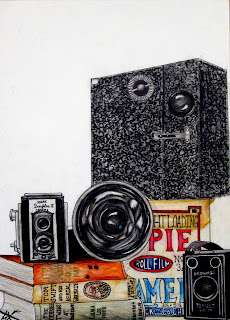Also
known as uranium glass, Vaseline glass has a yellow or yellow-green tinge with
an oily sheen when viewed under natural or indoor light. Uranium glass had uranium
oxide added to a glass mix before melting for coloration. Vaseline glass is
transparent or translucent and should not be confused with Custard glass or
Burmese glass which also contains uranium oxide, but is opaque. Popular uranium glass styles range from Victorian to Art Deco. Glass
containing uranium is easily identified by viewing it under ultraviolet light
(also known as black light) where it will glow a brilliant green.
Production
of uranium glass was most popular from about 1840 through World War I. Around
1943, the U.S. government halted the production of Vaseline glass altogether
when uranium became a heavily regulated substance. In 1958, uranium oxide was
deregulated, and the production of uranium glass resumed. This time, however,
producers used depleted uranium in place of more radioactive natural uranium.
During
the Great Depression, manufactures added iron oxide (rust) to the uranium glass
formula to give it a greener look. Carnival glass was also produced in some
uranium glass varieties which gave it a marigold, iridescent look. Glass
purists usually exclude this Depression glass and Carnival glass from the
Vaseline glass family.
Practically
since its invention, uranium glass carried a bad reputation because it was
thought to be a health hazard. Usually Vaseline glass pieces contained from
just a trace to about 2% uranium by weight. However, some pieces from the
beginning of the 20th century were up to 25% uranium by weight. The
U. S. Nuclear Regulation Commission studied the health risks of Vaseline glass
in its 2001 report. The report confirmed what collectors had been saying all
along. The radiation from Vaseline glass is less harmful than the background
radiation levels we are exposed to every day.
This week
at Prairie Museum of Art and History, Mike Weed, our maintenance guy, added an
ultraviolet light to our Vaseline glass exhibit case. This new feature allows a
visitor to switch the lighting between normal indoor light and ultraviolet
light to observe the resulting bright green glow of the uranium.
(Click image to enlarge)
Normal indoor lighting.
Brilliant green glow resulting from ultraviolet lighting.

















